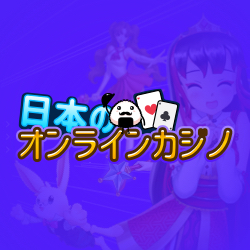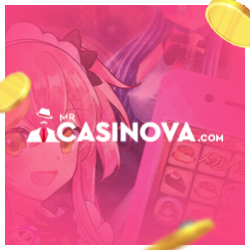Rock Band Xbox 360 Review
The rock and roll lifestyle, eh? Not all it’s cracked up to be, let me tell you. I don’t know from personal experience, of course, but last year, I lived across the road from a pretty major live music venue in Glasgow. From my living room, I could see directly across the road and into the green room, and watched hundreds of acts chilling out pre- and post-show, and let me tell you, it looked like I was having more fun in my flat than they were having over there, except for one memorable night, in which a certain UK rap star had a party with actual bunny girls and managed to set fire to the furnishings…[Name deleted for legal reasons – Ed.].
Anyway, that’s the rock and roll lifestyle that draws us to idolize and despise musicians in equal measure (not the sitting around bored, ironing shirts bit though). Let’s face it – everyone has, at some stage in their lives, wrapped a tie around their heads and played guitar on a tennis racquet in front of their mirror. In fact, I’m doing it right now.
*ahem*
Tapping into those latent rock star fantasies has been the making of Harmonix and their (previous) Guitar Hero brand, but thanks to various legal wranglings, Harmonix are no longer involved in the production of Guitar Hero games. Instead they went off to make their own rhythm-based music game. What they came back with was Rock Band, which took the idea of a colour-matching air guitar simulator and turned it up to eleven. Instead of one plastic guitar peripheral, gamers are treated to a bigger plastic guitar, a plastic drum kit and a plastic (and surprisingly hefty) microphone. I genuinely wish I’d been in the Activision boardroom when their former employees produced that little snippet of information, because for Guitar Hero fans across the globe, it was really quite exciting.
And so, after an interminable wait, the game is now available in the UK, albeit only on the Xbox 360 at the moment. The PS3 and Wii versions have been delayed, so that Microsoft can get the first bite of the pie. Being the obsessive that I am, I imported the PS3 version from the states months ago, and so have actually been playing with the thing for quite a while, more than long enough to formulate a full opinion on the thing. Which I shall now share with you, my lucky readers.
(Yes, yes, I know the price is controversial, but I’ll come back to it, ok?)
The very first thing that strikes you about Rock Band is the sheer size of the box that it comes in (and certainly, this was the thing that struck the poor postman who had to carry it all the way up the stairs to my flat). Rock Band is a serious bit of kit. The drum kit takes up most of the box, and requires a considerable amount of brainpower to fit together for the first time, given the Ikea-esque unhelpfulness of the instructions. The guitar also seems massive compared to the Fisher Price guitars that came with Guitar Hero, and the microphone has a dismayingly long cable to unfurl and watch entwine about the legs of your coffee table, ankles and small pets.
If having all the instruments doesn’t quite tickle your fancy, it’s possible to buy the instruments individually along with a copy of the game. Alternatively, if you want to have the full experience, you’ll have to buy a fourth guitar to allow base and lead guitar parts to be played at once. An important note here as well is that the 40gig hard drive versions of the PS3 come with only two USB ports, requiring the purchase of a standard USB hub. The 360 has three USB ports as standard, only requiring the use of in included USB hub if four instruments are going to be used.
So, now that it’s all out of the box and set up, what’s the game actually like? In truth, it’s great fun. Games such as Rock Band, Guitar Hero and SingStar are games of two faces – one is found in the easier difficulty levels, in which new or casual players will find their kicks, and the other in the harder, more fast-paced and finger-bending levels of play, for the more experienced, dare-I-say it, hardcore player. Rock Band introduces another value into this equation, namely if you will be playing alone or with friends.
Solo, each of the instruments is satisfying and fun to play. All are approachable and fun for new players, with friendly and useful tutorials to help get things rolling. For seasoned Guitar Hero players, the Hard or Expert levels will be the first port of call, and do not disappoint. The core gameplay is essentially Guitar Hero with a lick of paint and some copyright-infringement-avoiding name changes, so if you were a fan of other similar games, you’ll feel right at home. Chances are, though, that you’ll gravitate straight for the drums. They certainly tempting, and tapping away on the coloured pads is fun and fairly intuitive. Players with actual drumming experience will find this par t of the game far too simple on the lower difficulties, but there’s plenty to keep them coming back on the harder difficulties and on the more advanced songs. Don’t worry if you don’t know your snare from your cymbal, as the easy modes are fun for the beginner and gradually improve your skills for the jump up to the more challenging song sets and difficulties.
Vocals are the only instrument included that require you to have a least a semblance of musical talent. While the game doesn’t mind if you don’t sing the right words on the most part, it’s a stickler for detail on the pitch of your voice. Moving from high to low along the scrolling lyrics according to what’s on-screen is challenging, especially if you’re not familiar with the song being played. After a few practice runs and experimenting with sending the on-screen pitch indicator scurrying, singing does become more accessible and rewarding, making it an equal to the other instruments in fun and enjoyment.
Playing solo, you follow a linear path through the set-list, with songs arranged differently according to instrument, as a basic drum song may have hugely challenging guitar solos and so on. This means meaning that in each solo campaign the song will appear at different stages of the tour. However, no matter which order you play through the set-list, you’ll be unlocking new songs to play in quick play and the multiplayer modes. And it’s in the multiplayer that Rock Band really comes into its own.
While it’s a satisfying experience for one player, the thrill and satisfaction of playing through the songs with three other friends as a team is undeniable. With a player on each instrument, having to work together is key, with Overdrive (the game’s rebranded Star Power) being applied to all players, not just the one who triggered it. This means that with skill and practice, all players can go into Overdrive at the same time, earning massive bonuses to boost their score and look generally awesome. If one member of the band fails during the song, it’s not the end of the world, as a band-mate can spend a portion of their saved Overdrive to revive them, bringing the failed band member back into the game. This means that team work and good communication is essential, with keeping an eye on your friends adding an extra dimension to the game. Playing with friends allows access to the World Tour modes, whether online or offline, which involves traipsing all over the globe to play gigs, gain fans and fortunes, and demonstrates the underlying sense of humour that Harmonix has injected into the game. Playing through some of the more advanced set-lists for the World Tour mode can involve playing ten or more songs in a row, and can be both exhausting and fulfilling in the extreme.
As with any music-based game, Rock Band lives and dies with its tracklist. Fortunately, it doesn’t disappoint, both in terms of included music and downloadable content. Memorable songs include Radiohead’s “Creep”, “Dani California” by the Red Hot Chilli Peppers and Deep Purple’s “Highwar Star”. Included in the UK version(amongst others) are Blur’s “Beetlebum” and Muse’s “Hysteria”. There’s tracks that will appeal to all players, with something to challenge every skill level. The amount of drunken hilarity that can be had playing some of the songs in remarkable, with Faith No More’s “Epic ” being a particular favourite.
However, for all that I can sing Rock Band’s praises, there are certain down-sides to this musical behemoth. The most glaringly obvious is the sheer, bare-faced rip off that is the price. To get the full Rock Band experience, including the game, two guitars, a microphone and drum kit will cost a cool £250 at recommended retail prices. While the high street stores seem to be reducing the price of the core bundle to £150, which includes game, guitar, microphone and drums, the extra lay-out for a second guitar still pushes the price up by £70. Compared to the US version, which retails at $170 for the core version, this is nearly double the price. Aside from being a blatant slap in the face for UK consumers, it also raises the question of whether Rock Band is truly worth that sort of lay-out of hard earned cash. Unfortunately, that’s not something I can answer with 100% accuracy for every single person reading this. I don’t regret my purchase in the slightest – Rock Band is the best game I have played in a very long time, providing a testing singleplayer mode and great parties with friends. However, as I imported from the US, I paid far less than the UK asking price, getting the core system for about £130, including postage (though not the import VAT…damn sneaky Government…) For me, it was worth it. For someone who enjoys Guitar Hero but isn’t sure if they’ll have the opportunity to play with friends, or who doubts that they’ll not enjoy even one of the instruments may be better going for the option of buying the game and a single instrument, with the choice of buying the other peripherals at a later date. It’s a difficult choice, and depends on what you’re looking for in the game.
The other black mark on Rock Band’s otherwise spotless copy book is the instruments themselves. The first thing you will notice is that the strummer feels incredibly mushy – adjusting to it takes a very long time, especially as it doesn’t have that “click” that denotes the note being playing on a Guitar Hero type controller. There are a number of modifications that can be done to improve this, though I resorted to the simplest, which was to open the guitar and re-inforce the springs that held the strummer with a couple of very small elastic bands. It did the job of making the thing feel better to play, and improve my performance back to Guitar Hero levels of awesomeness.
In addition, I’ve also had problems with the whammy bar. If you were to look inside the guitar, you’d see that the little spring that pulls the bar back in to position is extremely thin in diameter, and proved to be very fragile. Again, when mine broke, I replaced it with elastic bands, which made it feel better anyway.
Other quality issues with the controllers can be found with the drums. The foot-pedal is extremely prone to snapping, and mine has done so – though not in the usual place. To be honest, it’s not such a big deal as I repaired it with uber-strength super glue, using it to melt over the joint, and have had no problems since.
Either way, they’re quite good controllers, but prone to quality issues. If you are buying the guitar, read up about the different versions that are available and ensure that you buy the 1.4 version (with the improved stummer). There’s no way to tell from the box, but there is a different shape to the back of the actual guitar itself to give it away. Again, there are plenty of illustrated guides available, to be found through your search engine of choice. Don’t make a purchase without checking this out, even if the retailer doesn’t want to open the packaging for you – making a purchase as pricey as Rock Band means that getting the highest quality goods possible is key, and no-one should settle for less than perfect controllers.
Rock Band is a curious beast. It’s hugely fun to play, great with friends and alone and will make you smile with glee when you nail a tricky solo or drum fill. However, at the back of your mind will be the constant niggling doubt that maybe it’s not worth the massive price tag, that maybe you’ve shelled out far too much for a few plastic instruments and are now pushing buttons for momentary gratification like a monkey pulling levers for treats in some sort of weird scientific experiment gone wrong. Whether that’s just left-over paranoia from all the brain damaging sex, drugs and rock and roll that plagued you through your musical career or if it’s a valid concern is up to you to decide. Either way, Rock Band has changed the face of the genre for good, and promises to dominate the market for a long time to come.
9/10







